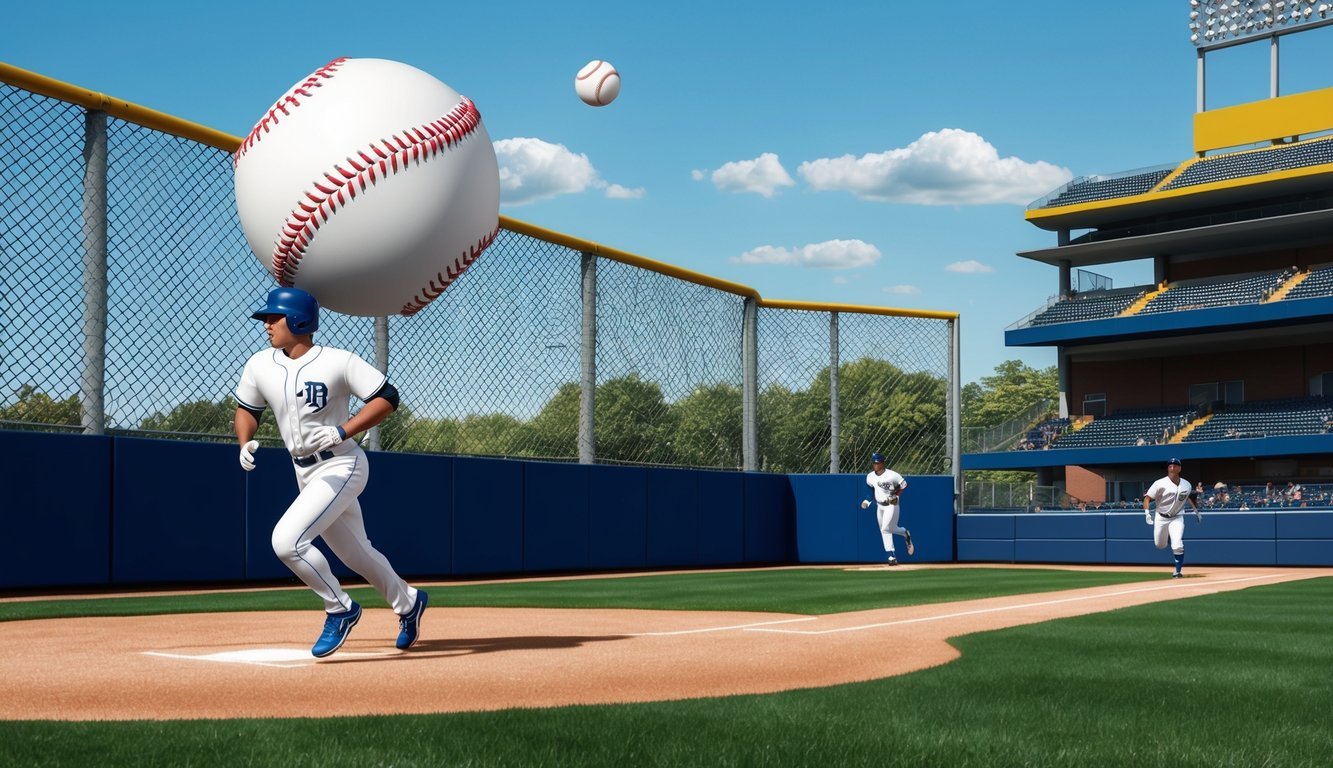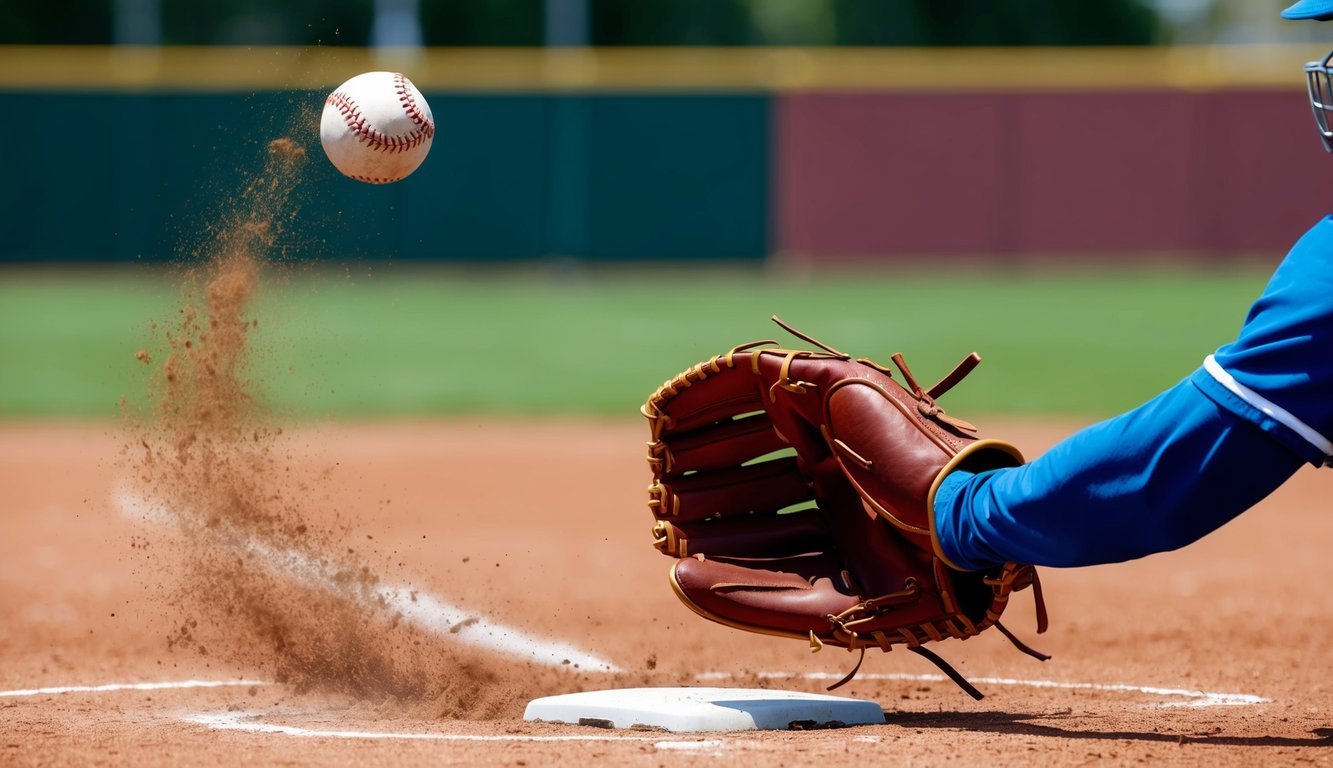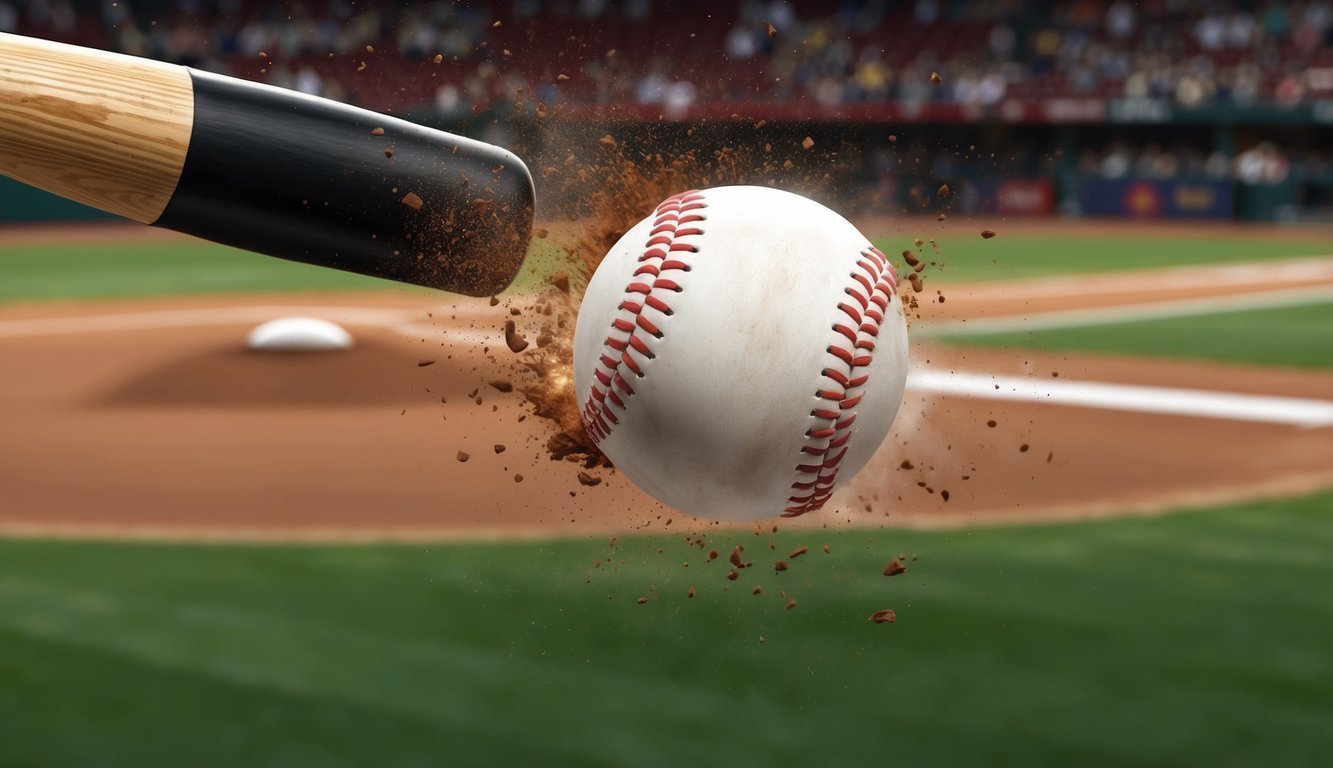Baseball enthusiasts often debate what constitutes a hit in the game. A batter gets a hit in baseball when they reach base safely on a fair ball without the benefit of an error or fielder’s choice. This simple definition encompasses various types of hits that add excitement to America’s favorite pastime.
Singles, doubles, triples, and home runs all qualify as hits in baseball.
Each type of hit carries its own significance and strategic value.
While a single might advance a runner or start a rally, a home run can instantly change the momentum of a game.
Not all contact with the ball results in a hit.
Sacrifice flies and bunts, though valuable offensive plays, do not count as hits even if they advance runners or score runs.
Understanding these nuances enhances appreciation for the intricacies of baseball statistics and strategy.
Basics of a Hit in Baseball
A hit is a fundamental statistic in baseball that measures a batter’s success at the plate.
It occurs when a batter safely reaches base after putting the ball in play, without the defense making an error.
Defining a Base Hit
A base hit happens when a batter strikes the ball into fair territory and safely reaches a base before being tagged or thrown out.
The ball must not be caught in the air by a fielder.
Base hits don’t include reaching base due to a walk, hit by pitch, or defensive error.
Hits are crucial for offensive success.
They advance runners, score runs, and contribute to a player’s batting average.
A batter who consistently gets hits is valuable to their team.
To qualify as a hit, the ball must travel beyond the infield or be difficult for infielders to handle.
Grounders that fielders can’t make a play on also count as hits.
The Role of the Official Scorer
The official scorer determines whether a play results in a hit or an error.
This decision impacts players’ statistics and historical records.
Scorers consider factors like:
- Ball placement
- Fielder positioning
- Difficulty of the play
- Speed of the batter
They must make quick, impartial judgments.
Scorers aim for consistency across games and situations.
Sometimes, plays initially ruled as errors are later changed to hits after review.
This process ensures accurate record-keeping in baseball’s stat-driven culture.
Different Types of Hits
Baseball recognizes four main types of hits:
- Singles: The batter reaches first base safely.
- Doubles: The batter reaches second base.
- Triples: The batter makes it to third base.
- Home runs: The batter circles all bases and scores.
Each type of hit has its own value:
| Hit Type | Bases Reached | Typical Play |
|---|---|---|
| Single | 1 | Ground ball through infield |
| Double | 2 | Ball hit to outfield wall |
| Triple | 3 | Ball to deep outfield corner |
| Home Run | 4 | Ball over outfield fence |
Batters aim for solid contact to produce these hits.
Hitting coaches work with players to improve their technique and increase their chances of success at the plate.
Scoring and Advancing on Hits

Hits are crucial for scoring runs and creating offensive momentum in baseball.
They allow runners to advance and create scoring opportunities, often leading to game-changing plays.
Hits Leading to Runs
Singles are the most common hit in baseball.
A batter who reaches first base safely on a hit immediately becomes a potential run.
With runners already on base, a single can drive in one or more runs.
Smart baserunning is key – runners must judge whether to advance one base or try for more.
Hits to the outfield gaps or down the lines give runners extra time to advance.
A well-placed hit can bring home multiple runners, turning the tide of a game.
Teams often strategize to get runners in scoring position before attempting hits, maximizing their chances of converting hits into runs.
Extra-Base Hits and Momentum
Extra-base hits – doubles, triples, and home runs – are particularly valuable for scoring and building momentum.
- Doubles often drive in runners from first base
- Triples frequently clear the bases
- Home runs guarantee at least one run
These hits energize the team and put pressure on the opposing pitcher.
A string of extra-base hits can quickly change the scoreboard and the game’s dynamics.
They also set up easier scoring chances for the following batters, as fielders may need to play closer to the bases.
Understanding RBI
RBI (Runs Batted In) measures a batter’s ability to produce runs with hits.
A player earns an RBI when their hit, sacrifice fly, or ground out allows a runner to score.
Not all hits result in RBIs – for example, a single with no runners on base doesn’t count.
RBIs are a key statistic for evaluating a player’s offensive contribution.
High RBI totals often indicate:
- Consistent hitting with runners on base
- Power to drive in runs from various base situations
- Clutch performance in scoring opportunities
While RBIs depend partly on teammates getting on base, they reflect a batter’s skill in capitalizing on those chances.
Coaches and scouts value players who consistently drive in runs, as they directly impact the team’s scoring output.
Player and Team Statistics
Hits form the foundation of many crucial baseball statistics.
They provide insights into player performance and team success, shaping how the game is analyzed and understood.
Batting Average and Hits
Batting average is a key statistic in baseball, calculated by dividing a player’s hits by their total at-bats.
For example, if a player has 150 hits in 500 at-bats, their batting average would be .300.
This metric helps evaluate a batter’s consistency and skill at the plate.
Hits are categorized into singles, doubles, triples, and home runs.
Each type contributes equally to a player’s batting average, regardless of the bases reached.
A player who consistently gets hits, even if they’re mostly singles, can maintain a high batting average.
On-Base and Slugging Percentages
On-base percentage (OBP) expands on batting average by including walks and hit-by-pitches.
It measures how often a player reaches base safely.
Slugging percentage (SLG) accounts for the total bases a player accumulates through hits.
These stats combine to form OPS (On-base Plus Slugging):
| Statistic | Formula | Example |
|---|---|---|
| OBP | (Hits + Walks + HBP) / (At-Bats + Walks + HBP + Sac Flies) | .350 |
| SLG | Total Bases / At-Bats | .450 |
| OPS | OBP + SLG | .800 |
Historical Significance of Hit Totals
Hit totals have long been a measure of a player’s career success.
Pete Rose holds the all-time record with 4,256 hits, a mark that has stood since 1985.
Ichiro Suzuki’s 262 hits in 2004 set the single-season record, showcasing his exceptional bat control and speed.
Reaching milestones like 3,000 career hits is considered a remarkable achievement.
Only 32 players have accomplished this feat, with many earning a place in the Baseball Hall of Fame.
Hit totals also reflect changes in the game over time.
Modern players face different challenges, including specialized pitching and defensive shifts, impacting their ability to accumulate hits compared to earlier eras.
The Role of Defense Against Hits

Defensive players work tirelessly to prevent hits and protect their team’s lead.
Their positioning, skills, and quick reactions can turn potential hits into outs.
Fielding Positions and Plays
Infielders and outfielders play crucial roles in stopping hits.
Shortstops and second basemen cover the middle infield, ready to snag line drives or scoop up ground balls.
Third basemen guard the hot corner, while first basemen stretch for throws to complete putouts.
Outfielders track fly balls and chase down line drives to prevent extra-base hits.
They must judge the ball’s trajectory and speed to make catches or cut off hits before runners advance.
Pitchers also contribute defensively by fielding bunts and comebackers.
Their quick reactions can turn potential hits into easy outs.
Understanding Errors and Fielder’s Choice
Not every batted ball that reaches a fielder results in a hit.
Errors occur when a defender misplays a ball that should have been caught or thrown for an out with ordinary effort.
These plays don’t count as hits for the batter.
A fielder’s choice happens when a defender opts to get an out on another runner instead of the batter.
This play doesn’t count as a hit, even if the batter reaches base safely.
Infield hits can be tricky to defend.
Speedy batters may beat out slow rollers or weak grounders, challenging infielders to make quick, accurate throws.
Special Types of Hits

Baseball offers some unique hitting scenarios that add excitement and strategic depth to the game.
These special hits can change the course of an inning or even the entire game.
Bunting for Hits
Bunting is a skilled technique where batters deliberately tap the ball softly into play.
While often used as a sacrifice play, some players excel at bunting for hits.
Speedy runners may bunt to catch infielders off guard, beating the throw to first base.
This strategy works well against deep-playing infielders or when the defense least expects it.
Drag bunts, where left-handed batters start running as they bunt, are particularly effective.
Successful bunt hits require precise ball placement and quick feet.
The Significance of Pinch-Hits
Pinch-hits occur when a substitute batter enters the game to hit for another player.
These moments can be game-changers.
Managers often use pinch-hitters in crucial situations, like late innings with runners in scoring position.
A well-timed pinch-hit can tie the game or drive in the winning run.
Pinch-hitters face unique challenges, coming in cold without previous at-bats.
Their success rates are typically lower than regular starters, making impactful pinch-hits especially valuable.
Teams value versatile bench players who can deliver in these high-pressure situations.
